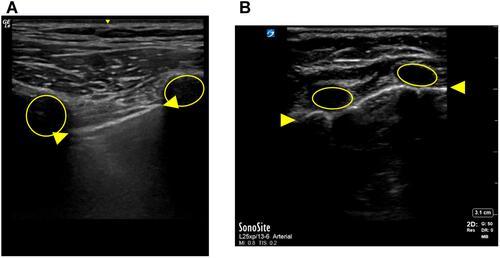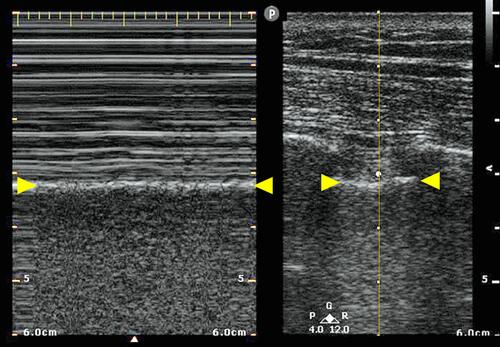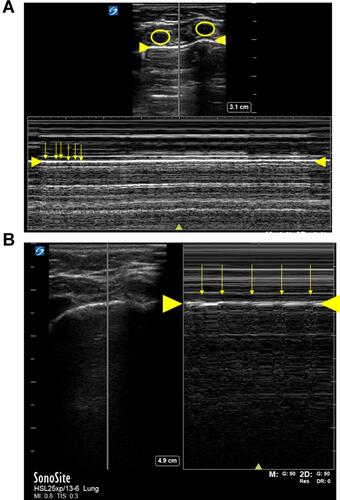Figures & data
Table 1 Lung Sliding and Lung Pulse
Figure 1 Demonstration of the Bat sign in an adult patient (A) and an infant (B). The Bat sign is the most basic view of lung ultrasound. The ribs are identified as low echoic regions (circles) with an acoustic shadow. The pleural line (between arrows) is a high echogenic (white) line just below and between the two ribs. Above the pleural line is subcutaneous tissue. All of the findings below the pleural line are artifact.

Table 2 Ultrasound Findings in B-Mode and M-Mode
Figure 2 M-mode (left image) and B-mode (right image). On the right image, the M-mode shooting line is in the middle of the picture (circle and yellow line). Above the pleural line (yellow arrows), there are several horizontal lines. A sandy pattern below the pleural line is known as the seashore sign, which is generated by lung sliding. This confirms that the lung is ventilated.

Figure 3 Bar code sign in an adult. M-mode point-of-care ultrasound. Numerous horizontal lines are seen both above and below the pleural line (between large yellow arrows). This is known as the bar code sign (stratosphere sign), which suggests the absence of lung sliding and the fact that the lung is not ventilated. Artifact created by the heart beat is detected at constant intervals (small yellow arrows).


